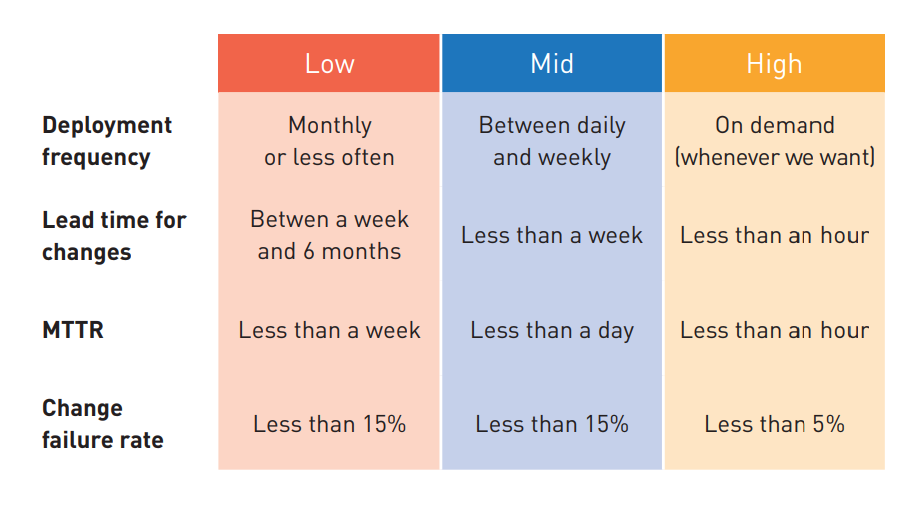Since I entered the job market in France, IT departments have been going through transformation plans and reorganizations. For the past 15 years, we have experienced a highly technology-rich period in the field of information technology. Recently, automation and service platforms have directly impacted how we build our software and our daily lives as IT professionals.
Let’s take a broader view and ask why our IT departments are taking these directions, their trajectories, and how to improve their approaches.
The IT Department: Partner or Cost Center?
Regardless of the industry, the battleground has shifted to producing value-added digital services for customers. All companies are faced with the innovator’s dilemma* and must find solutions to inject digital capabilities into:
- Their customer relationships: Uber & Airbnb are well-known examples of pioneers in digitalizing customer relationships and transforming how we consume services.
- Their production chains: Veolia produces connected valves to improve water distribution efficiency.
However, paradoxically, in this context where digital seems to be the gold of the century, IT departments still need to be seen as business partners rather than cost centers. Why is that? To date, IT departments need help modernizing and adopting new emerging practices to accelerate software production.
*Original title: “The Innovator’s Dilemma” by Clayton Christensen: The innovator’s dilemma is simple: How can one risk abandoning a profitable status quo to create risky conditions and regain a future?
There has indeed been an adoption of buzzwords, but the fundamental concepts are applied with great freedom, diluted in a soft consensus.
How are IT departments transforming?
After massive ERP installations in companies and the heaviness of their operations, IT departments turned a few years ago to a promising trio: Agile, DevOps, and cloud, to transform themselves. Experiments occurred, and we all experienced a Scaling Agile program à la Spotify, or SAFE (Scaled Agile Framework), full end-to-end industrialization, or Move2Cloud. A lot of effort was spent, with mixed results.
The observation is that buzzwords have indeed been adopted, but the fundamental concepts are applied with great freedom, diluted in a soft consensus, far from the original spirit.
Now:
- Agile means having post-it notes on a wall.
- DevOps has become a job title.
- Cloud refers to virtual machines and storage.
Aware that modernization is stalling, IT departments have a human and understandable reflex to organize transformation plans and reorganizations. Unfortunately, these actions are often too disconnected from operational realities and are only sometimes adequately embodied. This reinforces the feeling of deviated concepts. This observation is all the more painful for those involved in projects at the intersection of these worlds and constantly in motion.
To illustrate the difficulties IT departments face in modernizing, here are two examples:
- A framework from the book “Accelerate: The Science of Lean Software and DevOps: Building and Scaling High Performing Technology Organizations” to identify levels of performance in software production:

The evolution over time, highlighted in this grid from the Puppet State of DevOps Report 2021, clearly shows that adoption exists, but the generalization of practices has not taken place:

The trend of crystallizing the developer’s role as a superhero. The job description of a senior developer might look like this:
- Mastery of intrinsic skills
- Mastery of market testing tools
- Mastery of deployment pipelines
- Building application infrastructure (IaC – Infrastructure as Code)
- Maintaining operational conditions of existing applications
- Writing technical documentation
- Knowledge of databases
- Having a product vision
- Leading application architecture
- Mastery of business/client logic
- Anticipating new technology cycles
- Mastery of security risks and remediation
- Mastery of technical architectures: Containers and serverless
- Escaping technical constraints
It quickly becomes apparent that a developer can’t master all these topics, as they are too heterogeneous for the human brain and would require constantly changing contexts.
Agile, DevOps, and Cloud, these words now devoid of meaning, should not make us forget the importance of the role of IT departments in modernizing the company.
Is there an alternative?
I will continue with my example of the role of the developer. As a DSI (IT department) Manager, what I want in terms of priorities for our developers is that they:
- Master the business/client logic (e.g., understand how a bank transfer works)
- Master their intrinsic skills (e.g., master Java classes)
- Master support skills, which include everything else (e.g., master IaC – Infrastructure as Code)
Note that this logic applies regardless of their role in the company. The support skills of developers are intrinsic skills for CI/CD (Continuous Integration/Continuous Deployment) teams or cloud teams, which, in turn, must master their client’s logic.
This example shows that specific teams’ skills need to be externalized. Squads and cross-functional teams have their limitations. How can we externalize team skills without reducing the Time to Market (TTM)?
We must move away from a service desk model (where each team exposes its products as self-service) and limit collaboration between teams to what is necessary. This kind of collaboration is costly, not scalable, not repeatable, and should be punctual and limited in time; otherwise, changing the scope of teams is essential. I am convinced that modern organizations rely on teams with clearly defined scope, which expose their service “as-a-service.”
Each company has its methodology and its plan to “transform the IT department.” I have never encountered situations where imposed practices have resulted in adoption. The adoption of new practices happens in a bottom-up manner. They are acquired through projects built differently and adopted because they bring added value visibly and quickly.
How to go about it?
Far from offering a ready-made answer, I propose some avenues for reflection:
Advancing by maturity level:
To accelerate their modernization, IT departments must progress coherently on three maturity axes:
- Modernizing components on the technological axis:
- Moving away from monolithic solutions
- Using new standard technologies from the market
- Rethinking existing architectures to integrate managed services from a cloud platform.
- Modernizing team practices on the human axis:
- Generalizing industrialization practices
- Strengthening observability
- Systematically measuring project progress
- Adopting a product-oriented approach with infinite project life cycles.
- Modernizing organizations on the “IT-as-a-Service” axis:
- Clarifying team boundaries
- Exposing IT department team services “As-a-Service.”
Fully embracing the AWS (Amazon Web Services) platform.
Large-scale migration operations, long criticized by the community, can be excellent vectors of modernization, even in a program that sequences migration and modernization—tools to modernize one’s infrastructure become immediately accessible. Migrating quickly allows for reaching the tipping point faster, accelerating the legitimacy of emerging practices around modern, scalable, and business-adapted architectures.
Bottom-up approach
Our own experiences in industrialization and modernization have naturally led us to converge towards the capabilities proposed by the book “Accelerate: The Science of Lean Software and DevOps: Building and Scaling High Performing Technology Organizations.”
Based on research involving more than 2,000 organizations through 20,000 surveys, Accelerate proposes 24 best practices to accelerate software production in companies, distributed across five themes:
- Continuous delivery capabilities
- Architecture capabilities
- Product and process capabilities
- Lean management and monitoring
- Cultural capabilities
Far from marketing terms, we return to the basics to align software production with business needs, improve interactions between teams while eliminating bottlenecks with self-service, and accelerate industrialization through best practices.
Top-down approach
Top management must be aligned, fully convinced, and embody this change. Employees don’t wake up in the morning for time-to-market or to enrich shareholders. However, pedagogical communication to explain how IT department actions improve the business gives meaning to employees’ activities.
Learning
All employees must be acculturated and trained. Employees must adopt a posture of continuous learning. Analyzing more than 100 company transformations, Dr. John Kotter demonstrated that team adoption is essential in any transformation project. More concretely, for a change to occur, it is necessary to deploy iteratively, favoring collective intelligence until reaching the “tipping point” of 25%.
According to a study by Penn’s Damon Centola, about 25% of people must take a position before a large-scale social change occurs. These acculturation programs must mix the three recognized forms of learning (formal, social, and experiential) to maximize retention and proliferation of knowledge.
Resilience
The COVID crisis has led many employees to disengage or resign because their jobs seemed meaningless. However, this crisis has also been a wake-up call for companies, pushing them to digitize, adopt remote work, and question rigid and unfulfilling organizational models.
